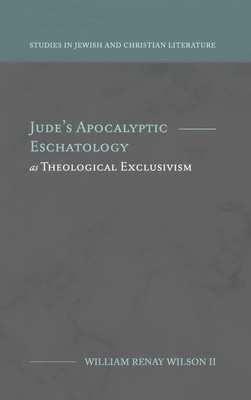
- Išsiųsime per 10–14 d.d.
- Autorius: William R Wilson
- Leidėjas: Fontes Press
- ISBN-10: 1948048493
- ISBN-13: 9781948048491
- Formatas: 15.2 x 22.9 x 1.1 cm, kieti viršeliai
- Kalba: Anglų
- Extra -15 % nuolaida šiai knygai su kodu: ENG15
Jude's Apocalyptic Eschatology as Theological Exclusivism + nemokamas atvežimas! | knygos.lt
Atsiliepimai
Aprašymas
In early Judaism and Christianity, the apocalypse genre and related apocalyptic materials shared a common ideology that can be identified as apocalyptic eschatology. Religious communities employed apocalyptic eschatology in order to resist theological pluralism as it encroached upon them. Writers were capable of utilizing apocalyptic eschatology to dictate acceptable belief and practice in an effort to control and preserve a faithful community. Among the early Christian writings, Jude's use of this ideology follows the same exclusionary pattern, addressing theological pluralism that his ancient audience faced and that the contemporary church continues to face today. Through his polemic, Jude also reveals a cluster of worldview non-negotiables for the early church.
EXTRA 15 % nuolaida
Kupono kodas: ENG15
Akcija baigiasi už 1d.17:00:24
Nuolaidos kodas galioja perkant nuo 10 €. Nuolaidos nesumuojamos.

- Autorius: William R Wilson
- Leidėjas: Fontes Press
- ISBN-10: 1948048493
- ISBN-13: 9781948048491
- Formatas: 15.2 x 22.9 x 1.1 cm, kieti viršeliai
- Kalba: Anglų
In early Judaism and Christianity, the apocalypse genre and related apocalyptic materials shared a common ideology that can be identified as apocalyptic eschatology. Religious communities employed apocalyptic eschatology in order to resist theological pluralism as it encroached upon them. Writers were capable of utilizing apocalyptic eschatology to dictate acceptable belief and practice in an effort to control and preserve a faithful community. Among the early Christian writings, Jude's use of this ideology follows the same exclusionary pattern, addressing theological pluralism that his ancient audience faced and that the contemporary church continues to face today. Through his polemic, Jude also reveals a cluster of worldview non-negotiables for the early church.





Atsiliepimai